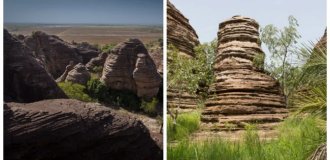Our everything 2016. How Ukrainian tanks in Donbass turned out to be better than Russian ones

Tanks that appeared during the First World War, as the experience of recent local wars shows, remain the basis of the infantry’s strike capabilities. The experience of the war in Donbass, which began as an anti-terrorist operation, but very soon grew into a full-scale war, where both sides made extensive use of tanks and artillery, is extremely indicative in this regard.
Ukraine inherited from the USSR nearly 6,500 tanks of various types: T-55, T-62, T-64, T-72, T-80. By the way, such a variety of types was extremely typical for the Soviet Union, where outdated models were not removed from service, but rather were modernized. In this way, numerical superiority over NATO was achieved.
Naturally, Ukraine could not afford to have several types of tanks with different engines and equipment in service at once, so in 1991 it was decided to abandon those types of tanks that were not manufactured in Ukraine. Thus, only the “Kharkov” T-64s remained in the Armed Forces of Ukraine’s armament, and the storage bases became a donor for Ukrspetsexport, which found buyers for the T-72s among “friendly” countries in Africa and Asia. Funds from exports were partially used to modernize the T-64s. This is how the T-64BM Bulat modification appeared.

T-64BM "Bulat" as part of the 1st separate tank brigade of the Ukrainian Armed Forces
The Ukrainian tank fleet at the beginning of 2014 consisted of 10 T-84 Oplot tanks and 1,100 T-64 tanks, of which 76 were upgraded to the T-64BM Bulat level. Another up to 650 T-64s, as well as up to 273 T-80s and up to 474 T-72s were in storage.
In the Ukrainian army of the spring 2014 model, there were two tank brigades - the 1st Guards Separate, which was based in Goncharovsk, Chernigov region) and the 17th Separate (city of Krivoy Rog, Dnepropetrovsk region). In addition to them, the 169th Training Center of the Ground Forces “Desna” and the Academy of the Ground Forces named after Hetman Petro Sagaidachny also had a small number of tanks.
With the beginning of the Crimean crisis, the brigades began to be put on combat readiness, which showed the true state of affairs. Thus, in Goncharovsk, only a few Bulats were able to be driven out of the hangars, and in the 17th Tank, two vehicles with ammunition burned out at once during a routine inspection.
However, through the joint efforts of the military and volunteers, by the beginning of May 2014, the tank brigades had acquired a more or less combat-ready appearance. At the same time, the 1st remained in the Chernihiv region to repel a possible attack by the Russians in the direction of Kyiv (in the summer it was transferred to the Lugansk region).

The main tank of the Ukrainian army is T-64BV
At the first stage of the war - the assault on Slavyansk, the cleansing of northern Donbass - tanks were used quite primitively. Mainly as a means of supporting infantry during blocking and combing terrain, to accompany columns, guard and defend checkpoints as long-range and maneuverable fire weapons. However, in July 2014, tanks (according to the militants themselves, captured, but in fact, supplied from Russia) and a large number of anti-tank weapons appeared in the arsenal of illegal armed groups, which dramatically changes the nature of the use of tanks.
In the summer campaign of 2014, the army suffered quite significant losses in the tank fleet - and the combat ones were almost the smallest - most of the equipment was abandoned (or destroyed by self-detonation) due to its terrible technical condition. Moreover, not all tanks had mounted dynamic armor kits, and those that did, it turned out that the elements were not charged with explosives. The troops had an insufficient number of tank tractors and ARVs (armored recovery vehicles), which made it difficult to organize the timely evacuation of damaged vehicles.
It was the losses that forced us to put literally everything possible into operation. The T-64s were naturally rolled out first. In addition to the T-64BVs removed from conservation and undergoing repairs, the troops received T-64BV-1s, export T-64B1Ms (got to the Azov NGU regiment), and even completely outdated T-64Bs without dynamic protection.

Russian captured T-72B1 as part of the 93rd separate mechanized brigade
But even this was not enough for the rapidly growing army (it’s no joke, 15 new brigades were formed in a short time), so in the winter of 2014 the T-72s were put into service. Moreover, several modifications at once: T-72UA, T-72AV, T-72A and T-72B. Moreover, deliveries of T-80BV tanks began to the Airborne Forces. And finally, recently, photographs of transportation and actions at the T-55MV and T-62 training grounds have begun to appear, although it is likely that they will be used as training vehicles.
Ukrainian tanks were used most actively in the summer of 2014, in the battles for Donetsk airport and during the Debaltsevo operation in the winter of 2015. Our tankers had to fight both as part of tactical groups and independently.
In the history of the war, several oncoming tank battles were recorded, including with modern Russian T-72B3 (a couple of tanks were captured as trophies). In most cases, the tankers showed fairly high training, and their own tank aces appeared with 5 or more destroyed armored targets.
In this regard, the tank battle near Logvinovo in February 2015 is very indicative, when our tankers on Bulat tanks entered into battle with the Russian “seventy twos” of the 5th separate tank brigade.
The task of the tankers of the 1st Tank Brigade was to cover the attack of the 30th Mechanized Brigade group on Logvinovo. The tanks did not enter the village, but covered the left flank of the attack. When approaching the target, the infantry was suddenly attacked by a single T-72. The Russian tank, not expecting tank cover, was hit from a distance of 900 meters. Almost immediately, fierce fire was opened on the Bulats. As a result of a direct hit on one of the tanks, the “Knife” active protection system was activated, which not only saved the crew, but also preserved the combat effectiveness of the tank as a combat unit. After the positions of the second enemy tank were spotted, it was destroyed by a direct hit. In total, the enemy lost three T-72s during the battle for Logvinovo; we had no losses. It is worth noting that during the battles near Debaltsevo, this tank company of the 1st brigade destroyed 6 enemy tanks and 1 infantry fighting vehicle.

T-72B appeared relatively recently in the ATO zone
Here it is worth saying a few words about the unique “Knife” dynamic protection system. It differs from the Russian Kontakt-5 system primarily in the new principle of influencing attacking ammunition using a cumulative jet, which destroys and destabilizes the enemy projectile or cumulative jet. Such developments were carried out in the Soviet Union in the late 80s by specialists from the Steel Research Institute, but things did not go further than experiments. But Ukrainian specialists (SKTB IPP NANU together with SE BTsKT "MIKROTEK", Research Center "Material Processing by Explosion" of the Paton Institute of Electrical Engineering of the National Academy of Sciences of Ukraine and Kharkov Design Bureau named after Morozov) managed to bring the new system into service in 2003. Even before the fighting in Donbass, experts estimated the effectiveness of the complex compared to Kontakt-5 by 2-3 times, which was confirmed by Ukrainian tank crews during the fighting.
There have also been cases of mass heroism of tank crews - blowing up the crew along with the tank to prevent them from being captured. One of the most covered in the media was the feat of Captain Alexander Lavrinenko from the 93rd separate mechanized brigade, but the first such case was recorded on June 17, 2014 in a clash near the village of Metalist in the Lugansk region.
A feature of the war in Donbass is the presence of a large number of tanks among illegal armed groups. Moreover, the first militants to be commissioned are museum specimens. Thus, at the beginning of June 2014, photographs of a Soviet World War II IS-3 tank appeared, which local separatists removed from its pedestal in the Yubileiny Park in the city of Konstantinovka. Armed with a machine gun, they tried to use the tank several times against the army; the vehicle was subsequently abandoned. Another three or four T-34-85 tanks were removed from their pedestals in Druzhkovka, Donetsk and somewhere in the Lugansk region, but there was no data on their combat use.

T-80 tanks reinforced airborne units
Yes, in principle, they were not needed - from mid-June, first T-64s and then T-72s appeared in commercial quantities from the militants.
The first T-64BV appeared at the disposal of the illegal armed formations on June 12, when three vehicles proceeded under their own power from east to west through Snezhnoye, Torez, Makeevka to Donetsk. It was rather a propaganda move, since the appearance of a column of tanks was accompanied by formal hysteria in the media of the “young republic” - reports appeared en masse that “they received three tanks for service”, modestly keeping silent about who exactly they received it from. In the future, such deliveries will be carefully disguised and, moreover, will not be published in the press.
On June 20, 2014, another five T-64BV tanks arrived from Russia. Moreover, photographs of these tanks on trailers in the border areas of the Rostov region appeared on social networks. As information support, on June 19-20, the Russian media actively circulated news like “Militias captured a tank base near Slavyansk,” which they themselves refuted almost immediately.
The very first T-64 captured from the enemy by Ukrainian soldiers (during the defense of the Artyomovsk warehouses) showed the source of the tanks. The official statement of the Ministry of Defense of Ukraine dated June 27, 2014 literally said the following: “After an analysis carried out by specialists of the Military Law Enforcement Service in the Armed Forces of Ukraine, it was established that, according to the factory numbers, this T-64BV tank was produced in October 1987 at the Kharkov Tank Plant named after Malysheva. According to archival data, this combat unit was sent to a military unit, which at that time was stationed on Russian territory. This T-64BV tank was not and is not registered with the Ukrainian Armed Forces.”

T-64BV from illegal armed groups
Today, according to some sources, illegal armed groups in the Donbass are armed with 320 T-72A/B and T-64 tanks.
Thus, we can safely say that the war in Donbass confirmed the conclusions of leading Western theorists and showed ways for the further development of Ukraine’s tank fleet. During combat operations, tanks quite successfully proved themselves to be a universal, well-protected and mobile battlefield fire weapon to support non-mechanized and mechanized infantry.
Once again it was demonstrated that tanks, united into independent units and formations, can decisively turn the tide and defeat even a larger enemy.
As for the further development of the tank fleet, it is obvious that after the end of the “hot phase” of hostilities, Ukraine will face unification through the installation of the same guns and machine guns, the same type of engines and transmissions.





















